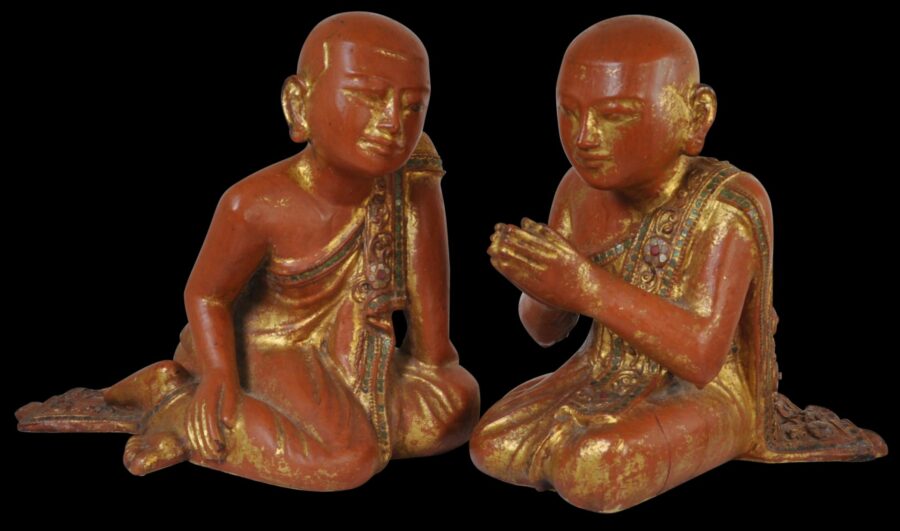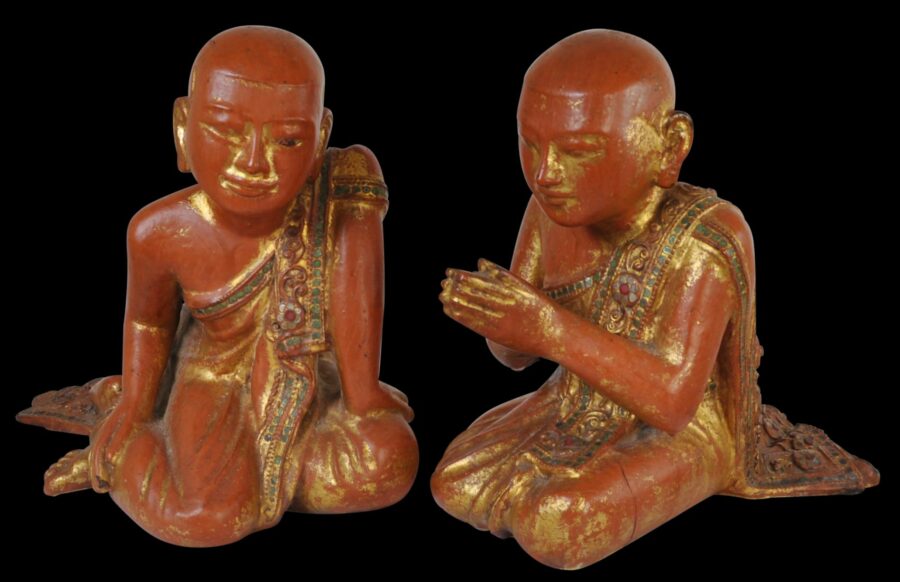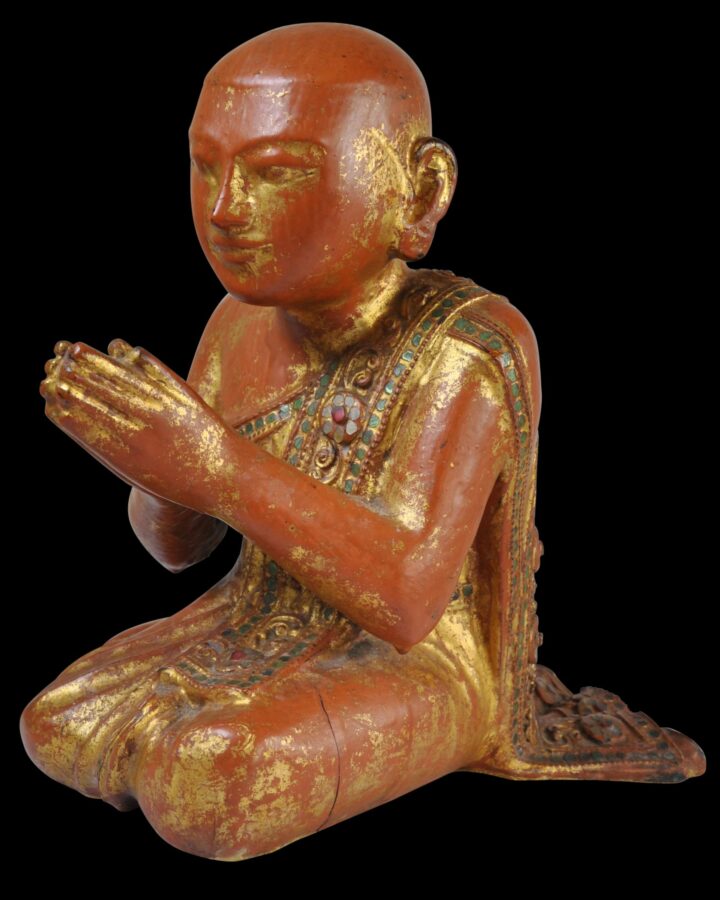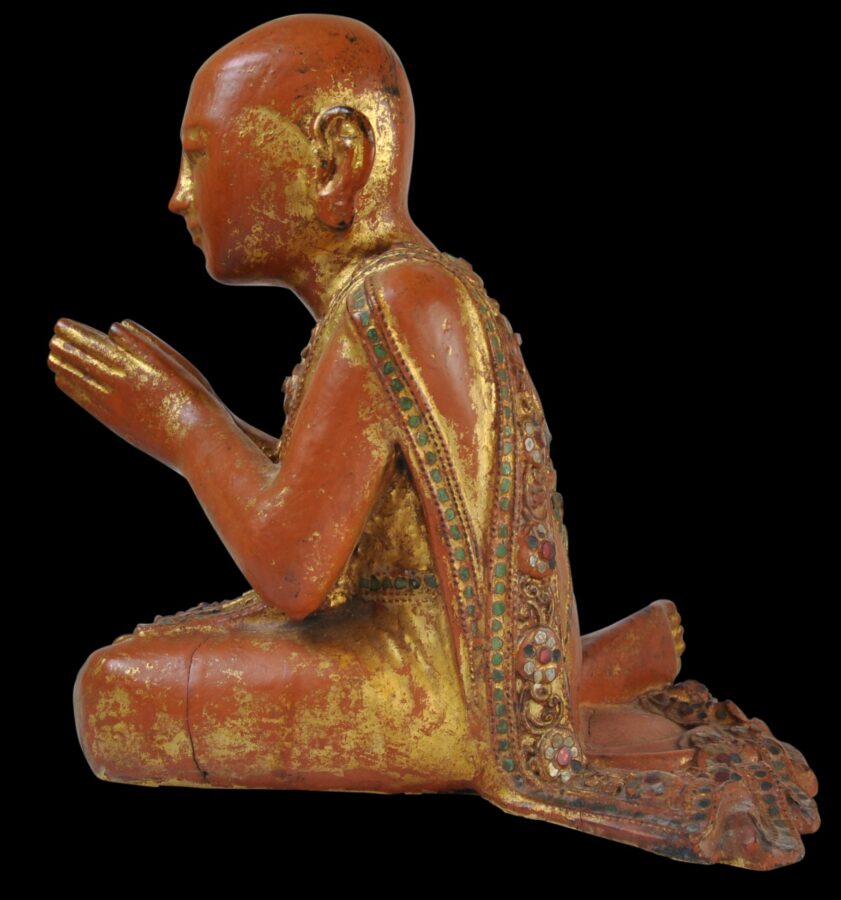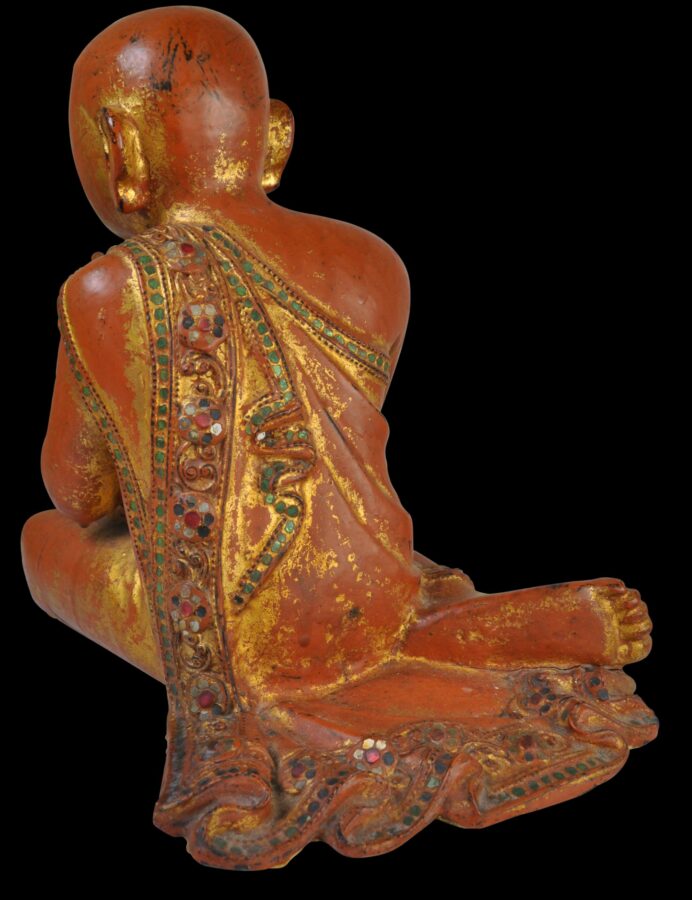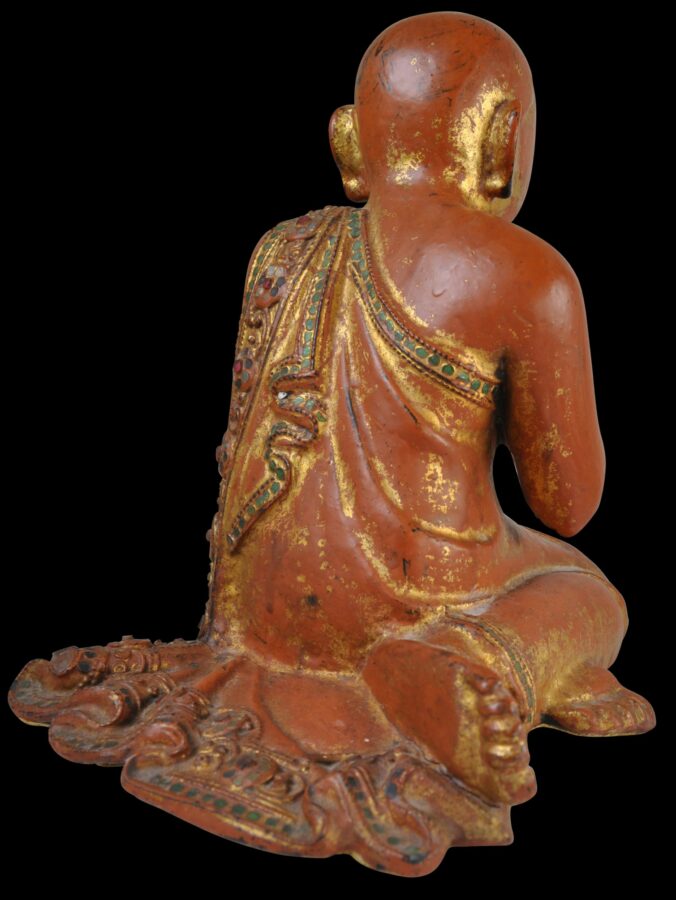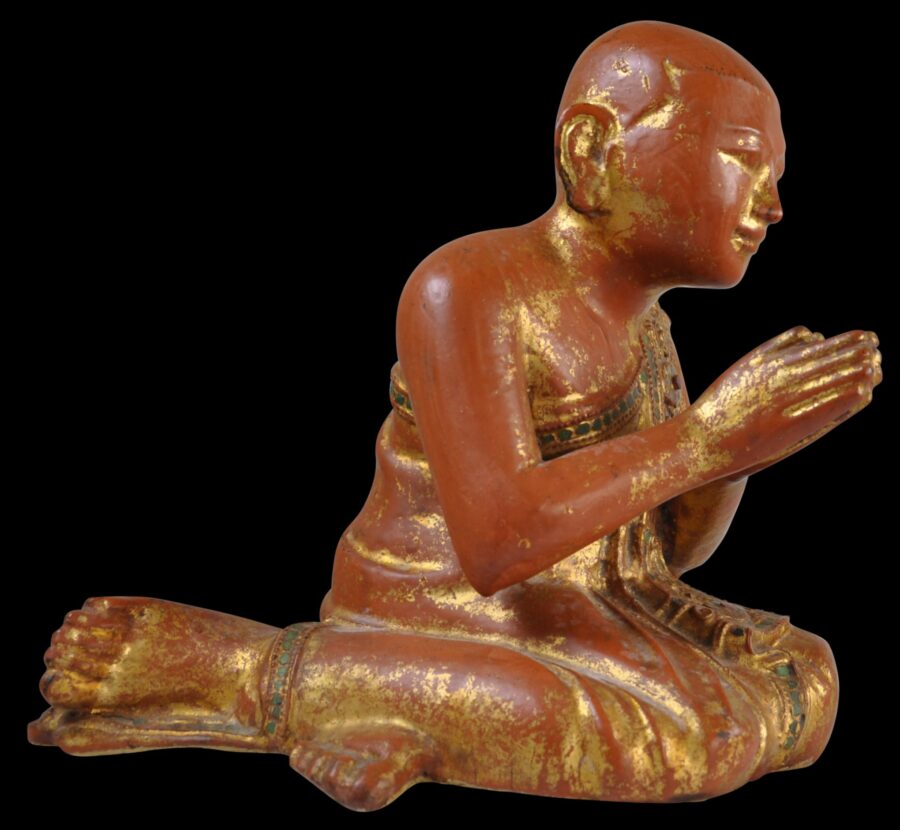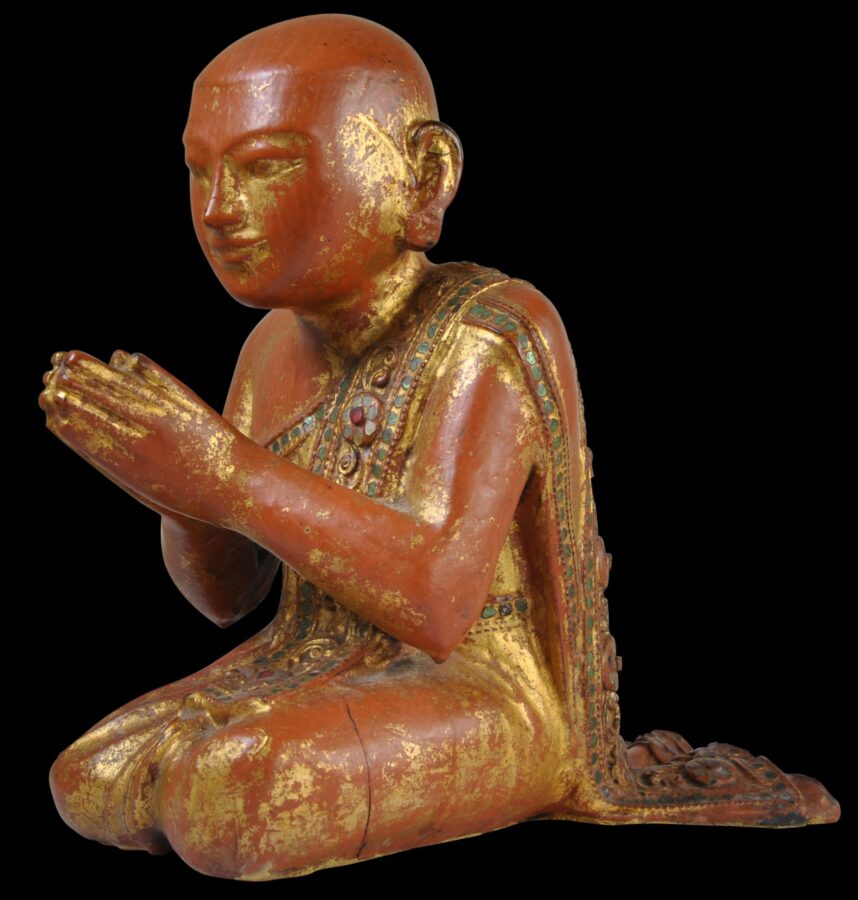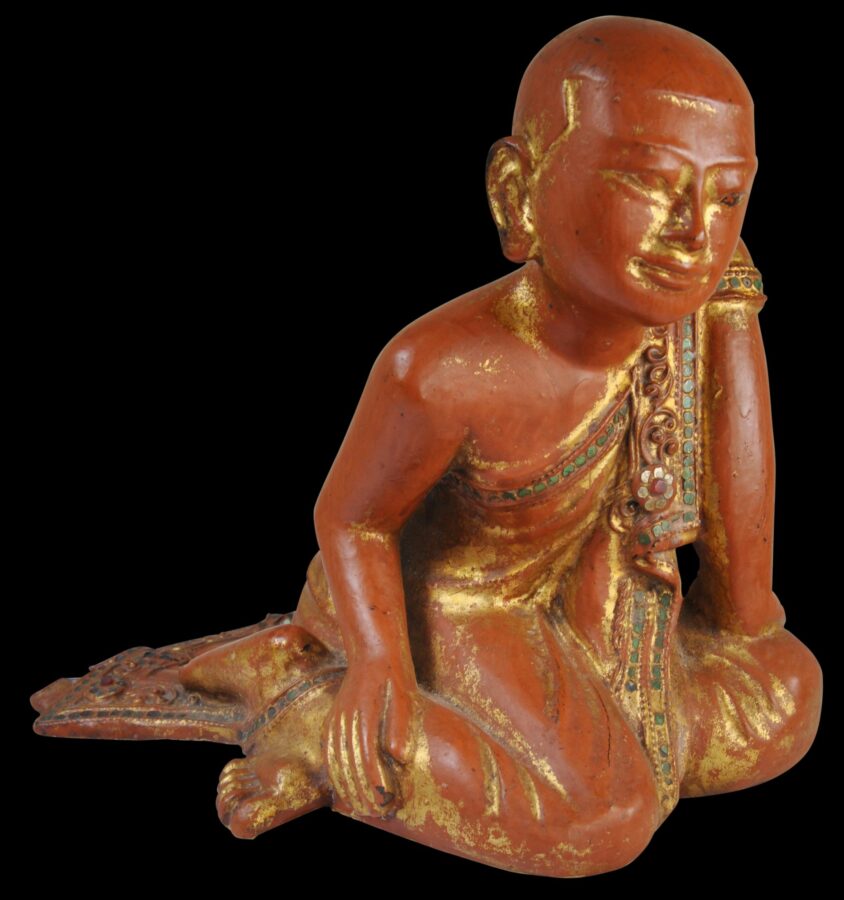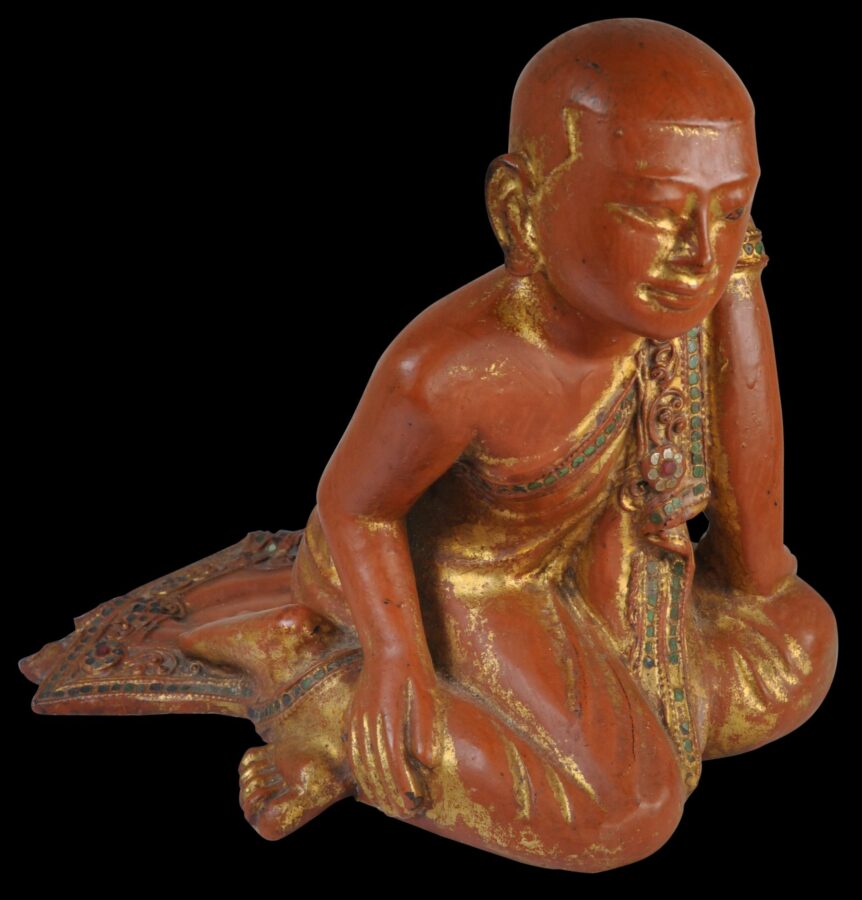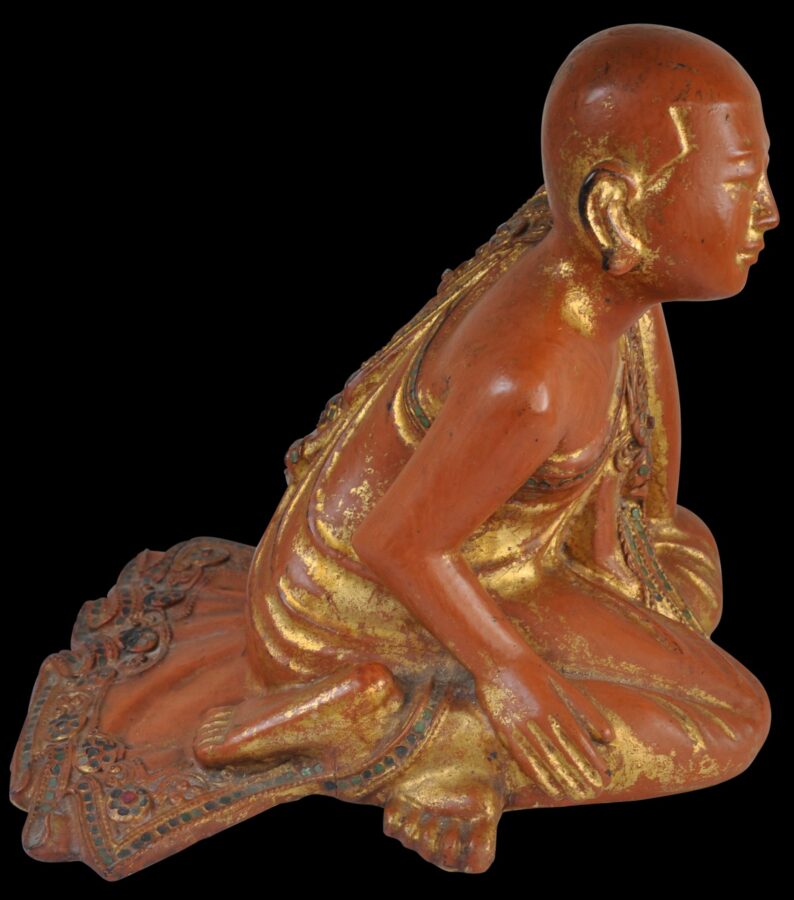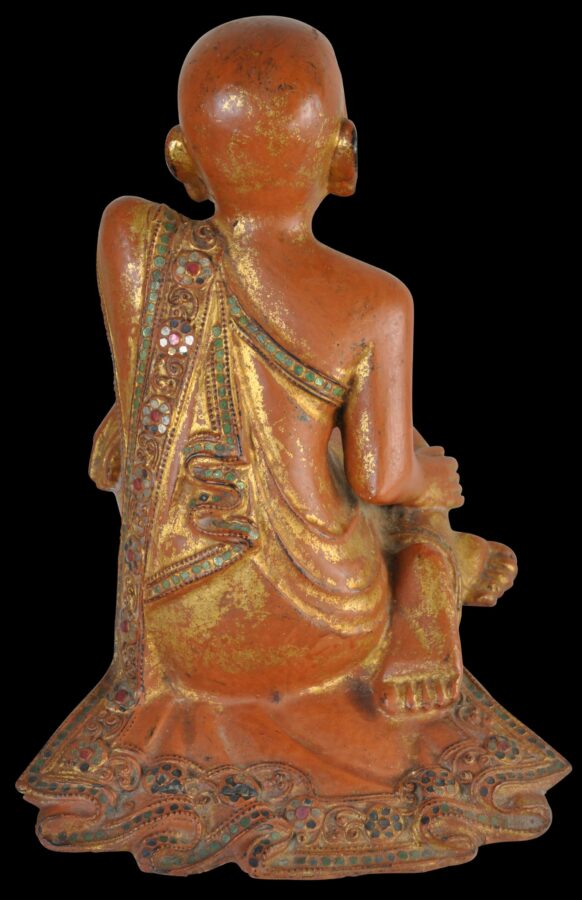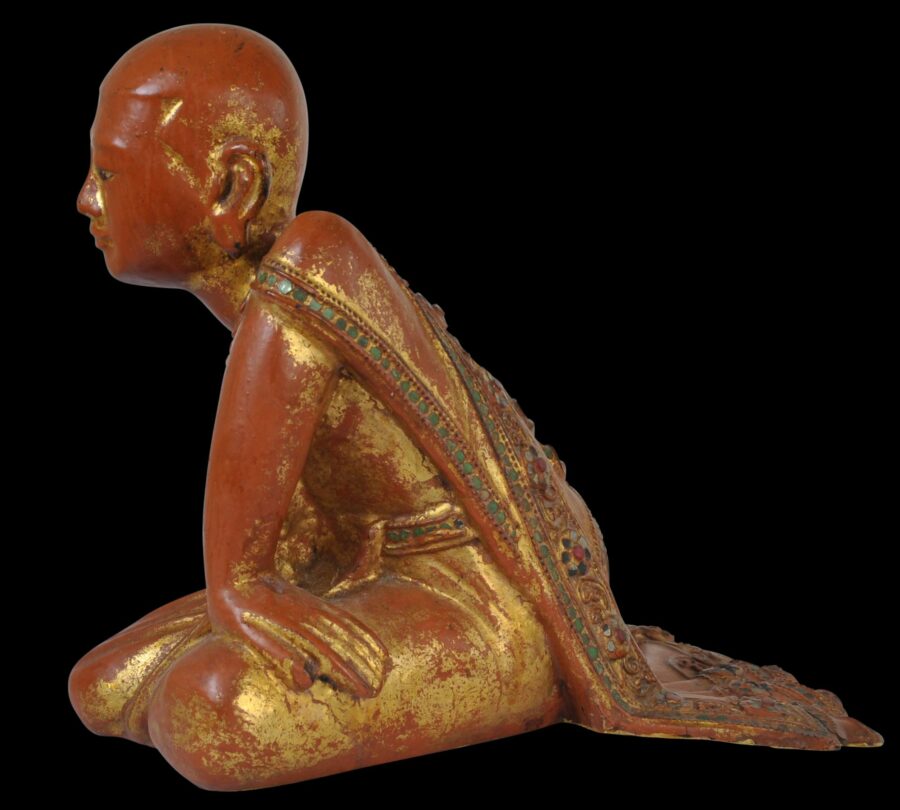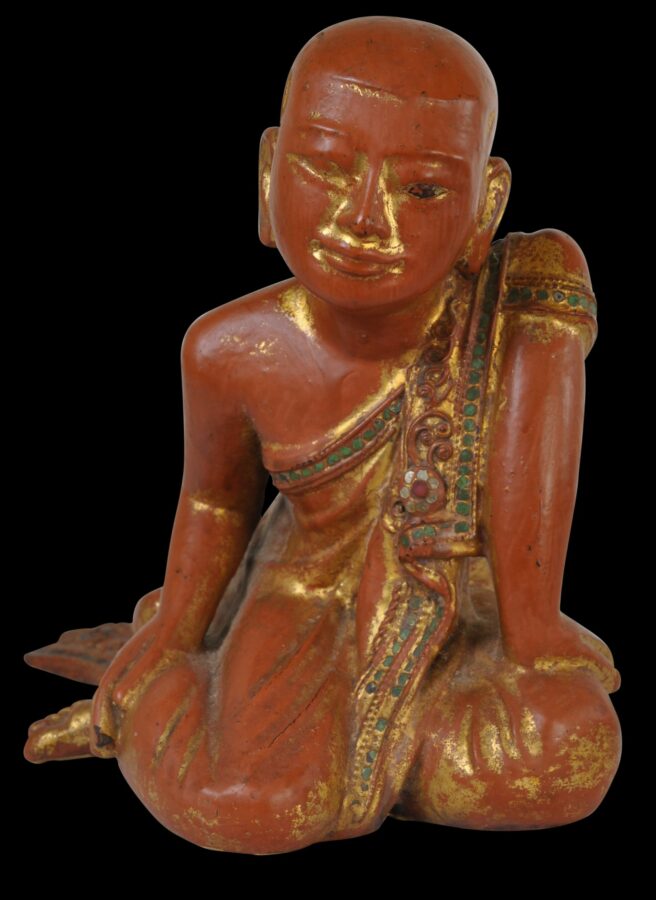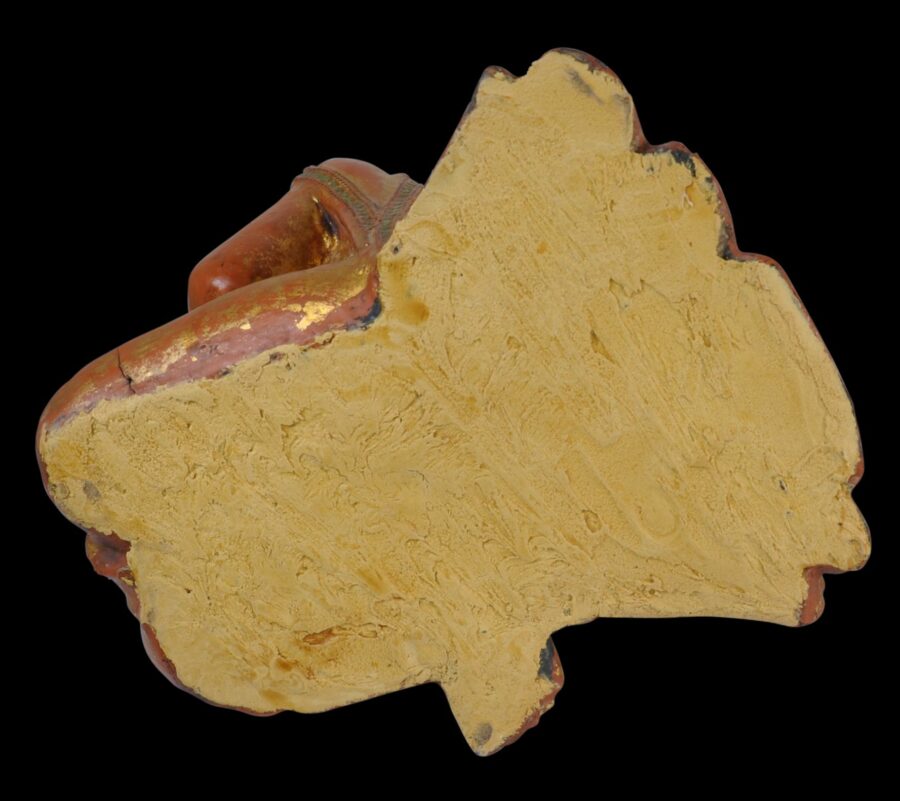Enquiry about object: 9356
Pair of Burmese Gilded Lacquered Monk Disciples, Sariputta & Moggallana
Burma (Myanmar) 19th-early20th century
height: approximately 12cm, combined weight: 2,013g
Provenance
UK art market
This elegant pair of the Buddha’s two chief disciples, Sariputta and Moggallana, is of gilded and lacquered wood with green, red and silver foiled mirrored glass inserts (the gilding has largely worn away). The expressions of each are finely rendered: their gazes are inquiring and contemplative. The faces and heads are particularly well modelled and clearly are Burmese.
Sariputta sits in a position of listening with one hand resting on a shin and the other on his thigh. Moggallana sits with his hands pressed together in adulation. Both sit in the way of a Buddhist worshipper with their feet pointing behind them and away from the focus of veneration. Their feet rest over the ends of their robes which trail out behind them.
The robes of each are highlighted with bands of moulded lacquer relief work, known as thayo work. The lacquer thayo on the robes of each disciple is inset with foil-backed glass roundels (known as hman-zi- shwei-cha).
Images of the Sariputta and Moggallana often are found in Burmese artwork. Carved wooden and lacquered images were used in temples and monasteries where they were placed before images of the Buddha as part of a shrine (hpaya khan).
See McGill (2009, p. 77) for a related example of Sariputta, and Issacs & Blurton (2000, p. 127) for a pair of disciples in the collection of London’s Victoria & Albert Museum.
The pair was acquired in the UK and almost certainly have been in the UK since colonial times. The pair are in fine condition.
References
Fraser-Lu, S., Burmese Crafts: Past and Present, Oxford University Press, 1994.
Isaacs, R., & T.R. Blurton, Burma and the Art of Lacquer, River Books, 2000.
Lowry, J., Burmese Art, Victoria and Albert Museum, 1974.
McGill, F. (ed.), Emerald Cities: Arts of Siam and Burma, 1775-1950, Asian Art Museum, 2009.


